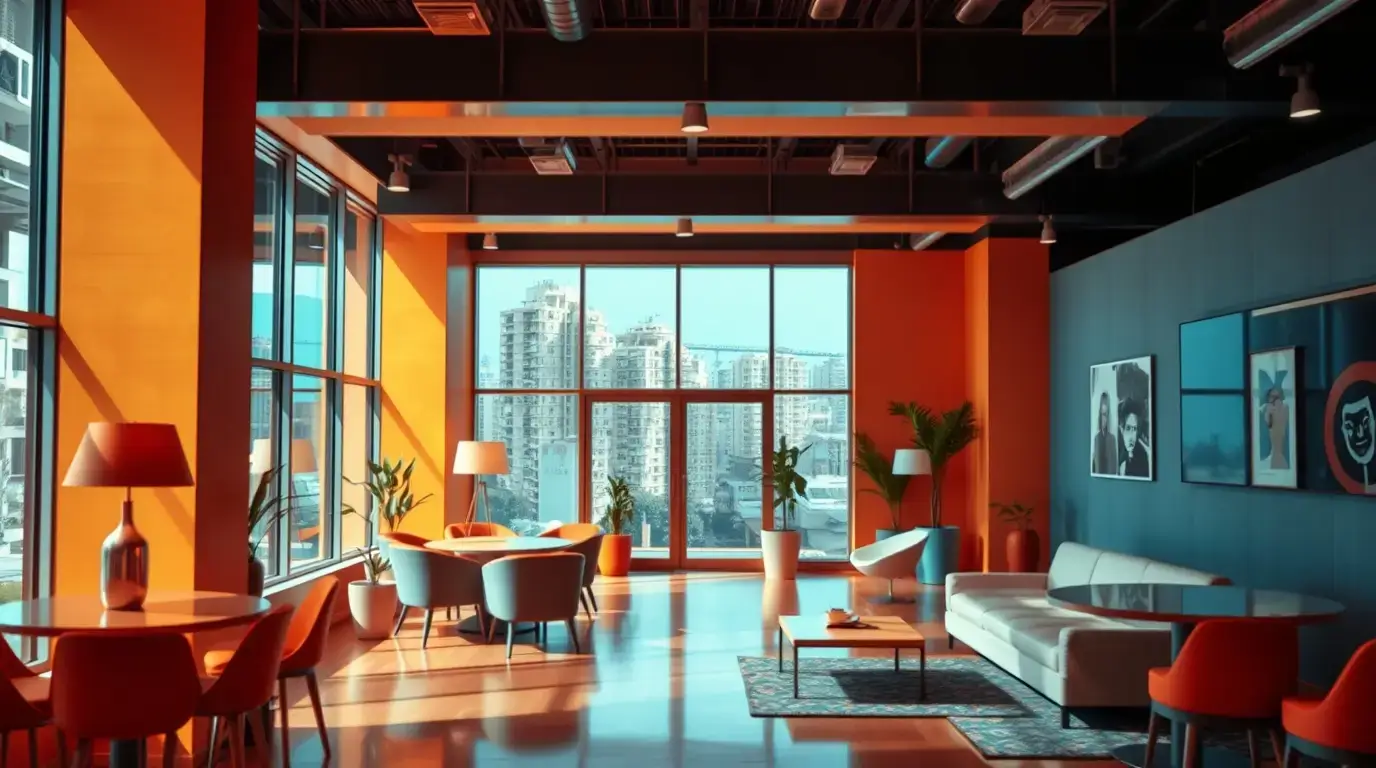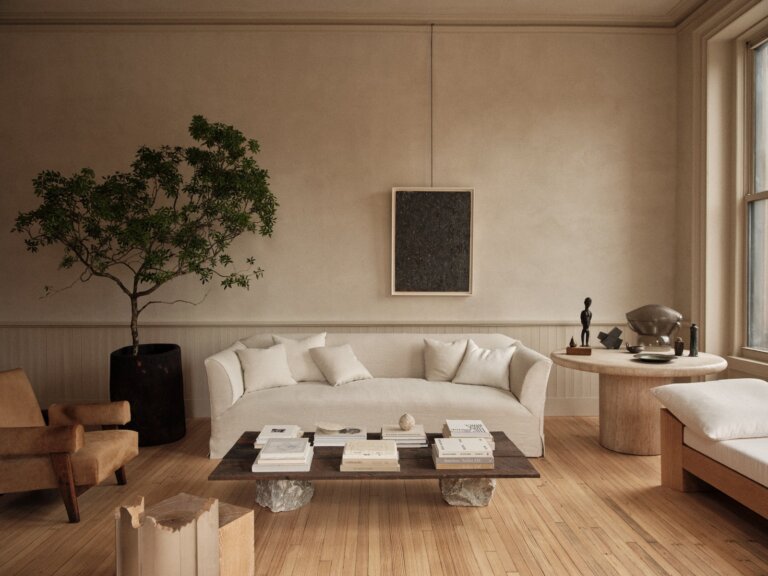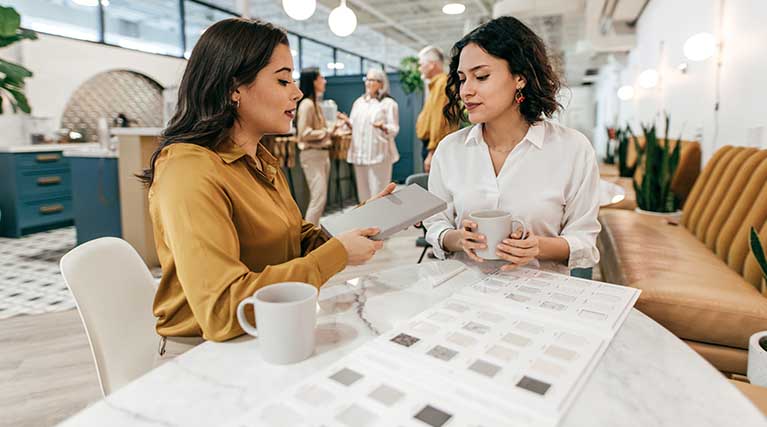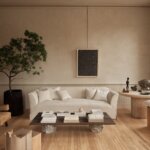Interior designers work in a dynamic and creative environment. They blend art with functionality to transform spaces.
How is the Environment Like As an Interior Designer? Imagine a career where every day presents new challenges and opportunities. As an interior designer, you might meet clients, sketch designs, and select materials—all in one day. This field requires a keen eye for detail and a passion for aesthetics.
The environment is often fast-paced, with deadlines and budgets to manage. Collaboration is key, as designers frequently work with architects, contractors, and clients. Whether working in a firm or freelancing, the ability to adapt is crucial. Overall, the life of an interior designer is vibrant, demanding, and highly rewarding for those who love creativity and problem-solving.

Credit: interiordesign.net
Introduction To Interior Design
Interior design is about creating beautiful and functional spaces. An interior designer plans and decorates rooms. They make sure spaces are both attractive and useful. Designers work with furniture, colors, and light.
An interior designer listens to clients’ needs. They create plans to meet those needs. Designers choose furniture and decorations. They also decide on colors and lighting. Their goal is to make spaces look good and feel comfortable.
Interior design improves the way we live. Good design makes spaces more enjoyable. It can also increase the value of a home. Well-designed rooms can help people feel relaxed and happy. Interior design is essential for creating pleasant and functional environments.
Daily Life of an Interior Designer: A Busy and Creative Routine
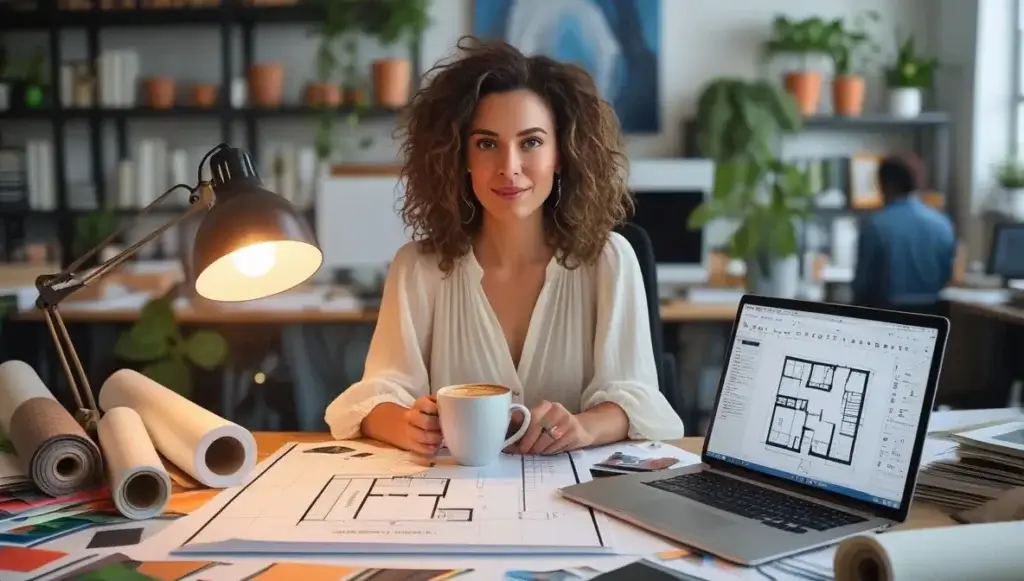
The life of an interior designer is fast, Imaginative, and very participatory. From seeing clients to choosing materials and managing projects, each day varies. Prioritize, manage, and problem-solving skills are key to working with several projects at a time.
Morning: Client Meetings & Planning
The workday begins with client appointments to review preferred looks, budgets, and timelines for a project. Client appointments allow designers to comprehend the desired picture and confirm all specifics in place before proceeding with a project.
- Check schedule and mails – Get updated about timelines and feedback from clients.
- Client talks – Discuss mood boards, sketches, and material choices.
- Calendar updates – Modify timelines according to client requirements and work in progress.
Mid-Day: Site Inspection & Choosing Materials
Interior designers regularly inspect work locations to monitor constructions, renovations, and installation of furniture and materials. They monitor work in progress, correct any mistakes, and verify that work is executed according to planning.
- Site inspections – Measure spaces, evaluate ongoing work, and verify correct implementations of designs.
- Material & Color Choosing – Shop at showrooms and choose furniture, fabrics, lights, and decor items.
- Team collaboration – Consult with architects, contractors, and suppliers and coordinate work in motion according to timelines.
Afternoon: Office & Coordination
Once at workstations at a studio or in an office, interior designers work on the technical and Imaginative part of a project.
- Creating Drawing Plans – Employ a computer with a software tool for creating a 3D model and a drawing of a room with its dimensions and a rough picture of a room with dimensions and a rough picture.
- Managing orders & budgets – Monitor expenses, source furniture, and receive goods in a timely manner.
- Team & client communications – Report to clients, answer queries, and coordinate with subcontractors.
Top 5 AI tools for interior design
Artificial intelligence is changing interior design, and one can create breathtaking spaces with ease. As a homemaker or a designer planning to redesign your living room, these AI interior design tools can make visualization, planning, and execution a cake walk.
1. Coohom – For 3D Interior Design & 3D Rendering
Coohom is a high-fidelity AI-powered interior design software with 3D rendering and virtual staging capabilities.
✨ Features:
✔️ AI-powered smart tools for smart planning and arrangement
✔️ Live 3D visualization for a real-life planning experience
✔️ Massive collection of decor and furniture for real-life modeling
✔️ Cloud platform for ease of access anywhere
Why Opt For It? Best for professional interior designers, real estate professionals, and remodelers in search of hyper-realistic designs.
2. Planner 5D – For Beginners & DIY Home Decorators
Planner 5D is an easy-to-use AI interior tool for creating 2D & 3D home designs with ease, through simple drag and drop options.
✨ Features:
✔️ AI-powered planner for quick planning
✔️ Adjustable decor & furniture items for custom planning
✔️ 3D walkthrough feature for real-life planning
✔️ Simple-to-use UI—for non-professionals
Why Opt For It? Best for beginners, homeowners, and DIY decor enthusiasts in search of a simple yet effective tool.
3. Homestyler – For 3D Staging & 3D Rendering
Homestyler utilizes AI for developing professional-grade 3D designs and virtual real estate and interior work.
✨ Features:
- AI room customizability with one thousand decor items
- 4K high-definition output for a real-life visualization
- Integration with virtual reality for a real-life environment
- Mobile compatibility—create designs through your smartphone or tablet
Why Opt for It? Best for interior professionals, real estate professionals, and homeowners for high-fidelity renders.
4. AI HomeDesign – Best for AI-Guided Design Assistance
AI HomeDesign is a high-tech tool utilizing artificial intelligence for suggestion design according to preference.
✨ Features:
- AI-designed design suggestions according to room and style preference.
- Aesthetic harmony through smart selection of colors and materials
- Auto-furniture positioning for efficient use of spaces
- AI-powered personalized insights for sound decision-making
Why Opt for It? Best for users who seek AI-created ideation and smart guidance.
5. AI Room Planner – Best for Space Planning & Layouts
AI Room Planner is best for AI-facilitated arrangement and planning for efficient use of spaces.
✨ Features:
- AI-powered room planning for efficient use of spaces.
- Existing room templates for quick and efficient room creation.
- Drag-and-drop feature for quick tweaks and customizations.
- VR compatibility for 3D visualization of spaces
Why Opt for It? Best for residents and architects for efficient planning and arrangement of small and big spaces.
✅ Best for Professional Designers: Coohom, Homestyler
✅ Best for Homeowner & DIY Users: Planner 5D, AI Room Planner,
✅ Best for AI Suggestion in Design: AI HomeDesign
End of Day: Winddown & Next Day Planning
The working day concludes with planning for work, review of work in progress, and prioritizing for following working day.
- Recording information about the project – Written information about changes, purchases, and site inspections.
- Organizing appointments in future – Appointments in future, site inspections, and selection of materials.
- Inspiring oneself – Reads trends in field, Pinterest, and design magazines for new inspirations.
The Need for Time Planning
Interior designers have several jobs at any one time, and therefore have a high level of organization and prioritizing skillset.
- Creating Schedules – Enables a schedule for meetings, site inspections, and actual work.
- Prioritizing – Enables important work to be prioritized.
- Record Keeping – Enables tracking work in progress, feedback, and budget information.
Work Environment of an Interior Designer
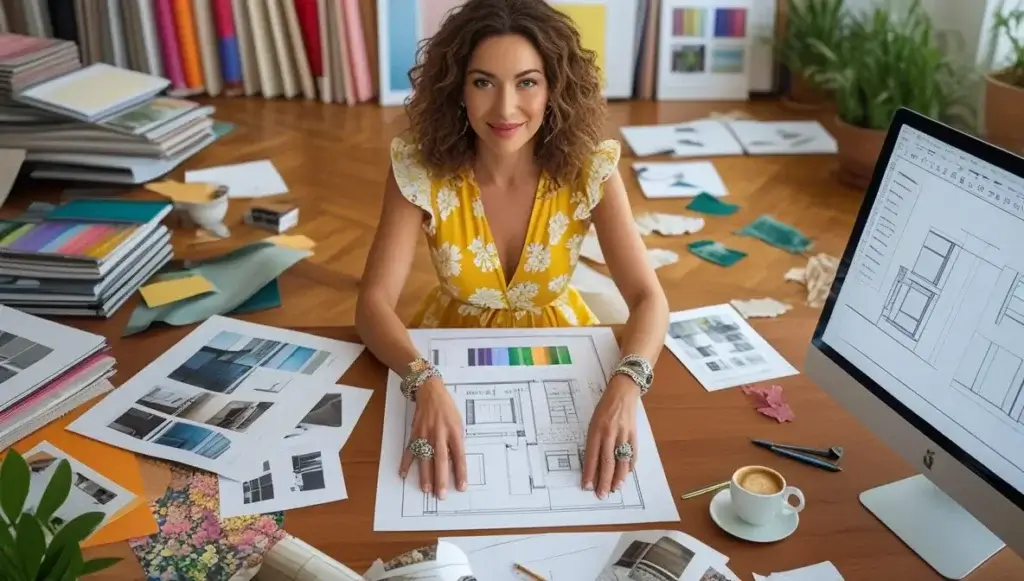
Interior designers work in dynamic and participative settings with a combination of creative, technical, and interpersonal skills. With a sensory eye for detail, problem-solving, and effective communications to execute a design theme, interior designers implement a design concept in a work setting. Wherever working in a studio, office, or at a site location, interior designers must work in a range of settings for a successful project.
Office Setup: Inspiration Hub
An interior designer’s office is designed with a purpose to inspire and foster creativity. It is a work space, a studio, and a conference room for developing and refining a theme.
Main Features of an Interior Designer’s Office:
- Color Chips & Fabric Scraps – With a variety of materials, textures, and colors, a designer develops one-of-a-kind interiors.
- Large Drawing Tables & Computer Station – Required for sketching out blueprints, making blueprints, and accessing computer software.
- Design Books & Magazines – Bookshelves with style guides, books on buildings, and style inspirations allow them to stay updated with current trends.
- Client Meeting Space – Comfortable, well-designed, and reflective of the designer’s sense of style and expertise, with a warm and inviting atmosphere for visitors.
On-Site Visits: Realization of Concepts
Interior designers make occasional site visits to comprehend the environment, interact with clients, and inspect installation of design work. On-site visits are essential for ensuring that ideas and real-life settings go in harmony.
What Goes On in On-Site Visits?
- Measurement & Photography – Dimension analysis assists in preparing correct blueprints.
- Client Consultation – Designers discuss wishes, life needs, and functional needs with them.
- Project Overseeing – Confirming construction, remodels, and installations adheres to the blueprint sketched initially.
- Safety Protocols – In the field, designers utilize safety helmets, work boots, and protective gear.
How an Interior Designer’s Workplace Environment Makes a Difference
- Fosters Inspiration – An organized office inspires imagination.
- Maximizes Productivity – Efficient workstations and tools maximize effectiveness.
- Fosters Client Trust – A sophisticated, professional office mirrors the expertise of the designer.
- Guarantees Project Success – On-site inspections prevent mistakes and verify high-quality performance
Collaboration with Clients: The Key to Successful Interior Design

Good interior design begins with gathering an idea of the dream of the client. Designers must have in-depth discussions, pertinent questions, and effective communications in an attempt to create spaces that speak to the client’s style, requirements, and budget.
Client Needs: Gaining an In-Depth Perspective
Before starting a work, interior designers make important information collection in an attempt to custom-fit the design to life and personality of the client. That involves such critical questions such as:
- What is your style preference? (Modern, traditional, simple, etc.)
- What colors do you enjoy and don’t enjoy?
- What budget have you? (To make a budget and imagination work together in harmony).
- What purpose will your room serve? (Storage, lighting, layout options)
Having such information, designers can build a concept that represents personality of the individual and addresses functional needs.
The Role of Clear Communication
Clear communications assure that ideas have been conveyed, expectations have been met, and work is conducted in harmony. Interior designers must:
- Clarify concepts – Use sketches, mood boards, and 3D walkthroughs for ease in visualization.
- Be a listener – Respond to feedback and include desired options in the design.
- Keep them posted – Give them information regularly about work in progress, changes, and timelines.
- Clarify specifics – Remove misconceptions through double checking important items such as materials and layout options.
Lack of proper communications can mean costly errors, timeline disappointments, or unhappy clients. An effective model for collaboration with a client brings about trust and a successful output
Creative Process
Interior designers find ideas in many places. Nature offers beautiful patterns and colors. Art can spark new thoughts. Travel shows different styles and cultures. Even a simple walk can bring new ideas. Designers also look at magazines and websites for trends. Talking with clients gives more inspiration. They share their wishes and dreams. All these sources help create unique designs.
Using color changes a room’s feel. Light colors make spaces look bigger. Dark colors add warmth. Furniture placement is key. Proper arrangement makes a room functional. Textures add depth. Smooth fabrics feel modern. Rough textures feel cozy. Lighting sets the mood. Bright lights energize. Soft lights relax. Patterns bring life. Stripes, dots, and shapes create interest. Each technique helps build a perfect space.
Tools And Technology
Interior designers use many design software tools. These tools help create beautiful spaces. AutoCAD is a popular choice. It helps make precise drawings. SketchUp is another tool. It helps create 3D models. These tools save time. They also allow for quick changes.
Photoshop is often used. It helps with editing images. It can also create mood boards. These boards show ideas. They help clients see the vision. Using these tools is a big part of the job.
Virtual Reality (VR) is growing in design. VR helps clients see designs in 3D. It makes the space feel real. This helps in making decisions. VR also allows for changes in real-time. This saves time and money.
Designers can use VR to show different ideas. Clients can walk through the space. They can see how it will look. This makes the design process fun. It also makes it more accurate. VR is a useful tool in interior design.
Challenges Faced by Interior Designers
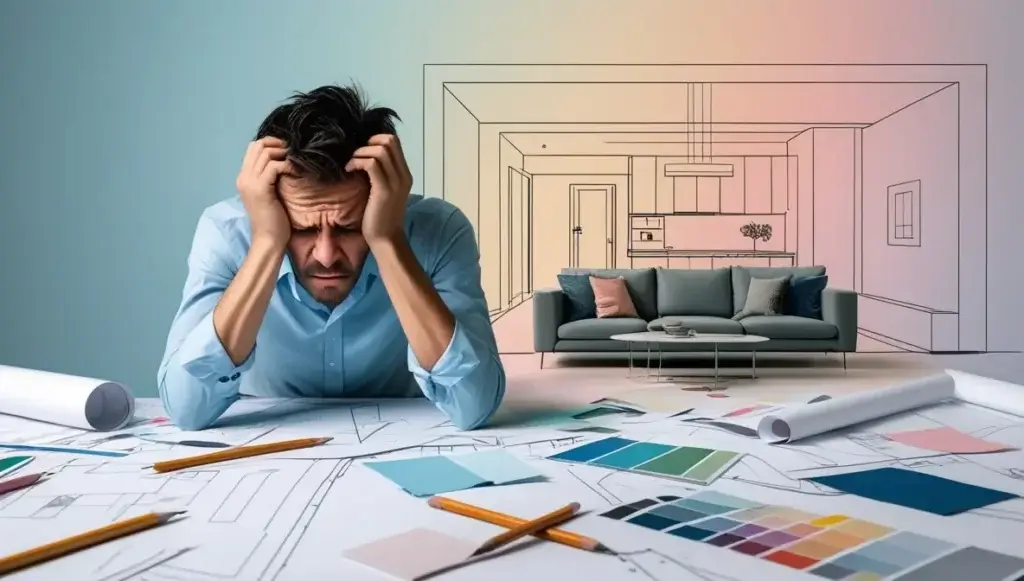
Interior designing is a difficult but a creative profession. As exciting a job as redesigning spaces, for a designer, a lot of challenges have to be tackled, such as tight timelines and budget constraints. In such a profession, one must have proper time management, problem-solving, and adaptability in order to thrive.
1. Handling Fast Turnarounds
Clients require quick delivery in most scenarios, and hence, one of the biggest challenge for interior designers is proper time management.
⏳ Under Pressure to Deliver Quick – Quick delivery is high in demand, especially for commercial structures or residential renovations.
⚠️ Risk of Error – Quick pace can lead to mistakes in taking dimensions, selecting materials, or actual work execution.
📅 Prioritize Time Effectively – Designers have to effectively schedule, prioritize, and coordinate with contractors in a manner to work under a timeline.
2. Handling Budget Challenges
Budget constraints can restrict options for creation and can make delivering high-class work a challenge in terms of financial constraints.
- Locating Cost-Cost Solutions – Clients have a budget constraint, and hence, a designer must balance budget and beauty.
- Not Compromising Quality – Saving cost must not mean compromising durability and beauty.
- Alternative Solutions – Installing cheaper materials, reusing furniture, and using budget-friendly decor maximizes budgets.
3. Handling Client Expectation
Every client has an ideal in mind, but sometimes their aspirations lack a reality.
- Disagreeing with Style – Clients cannot make a decision regarding a style, and in most cases, switch between options a lot.
- Clear Communication – Setting a reality check, explaining restrictions, and creating a mood board can make a big difference.
- Educating Clients – Explain to your clients why certain materials, compositions, and colors work best in a room and gain confidence and trust in your work.
4. Handling Several Teams
Interior design is a multidisciplinary collaboration between architects, contractors, suppliers, and clients.
- Dependence on Others – Vendors and workmen’s delayed work can affect timelines.
- Keeping Everyone in Step – Having regular meetings, visiting work in progress, and sending out updates eliminates miscommunication.
- Meeting Unexpected Challenges – Building site surprises (e.g., plumbing, structure work) can require last-minute redesigns.
5. Staying in Step with Trends
The interior design field is in a state of continuous change, with trends, materials, and technology changing, and thus, a designer must be in tune with trends, materials, and technology.
- Staying in Tune – Designers must research, attend expos, and learn new trends in order to remain in competition.
- Green Challenges – Most buyers prefer sustainable designs, and thus, one must source materials responsibly.
- Adapting to Emerging Technologies – Integration with smart homes and 3D model software is transforming the field, and thus, one must learn new software and techniques

Credit: www.bls.gov
Career Growth
Interior designers need to keep learning. New trends come up often. Courses and workshops help. They teach new skills and ideas. Staying updated is key. It helps in job growth and success. Many schools offer special classes. Online options are available too.
Meeting new people is important. Attend events and join groups. Share ideas and learn from others. Networking helps in finding jobs. It also brings new projects. Many designers work with teams. Knowing the right people can help. Building connections is a part of the job.
Sustainability In Design
Using eco-friendly materials is key. These materials help protect the earth. For example, bamboo is a great choice. It grows fast and is strong. Recycled wood is also good. It gives old wood new life. Another option is cork. It is renewable and soft to touch. Choosing these materials makes a big difference.
Sustainable practices are very important. One way is to reduce waste. Use what you have first. Also, buy items that last long. Another practice is energy saving. Use LED lights. They save power. Choose appliances that use less energy. These steps help the environment a lot.
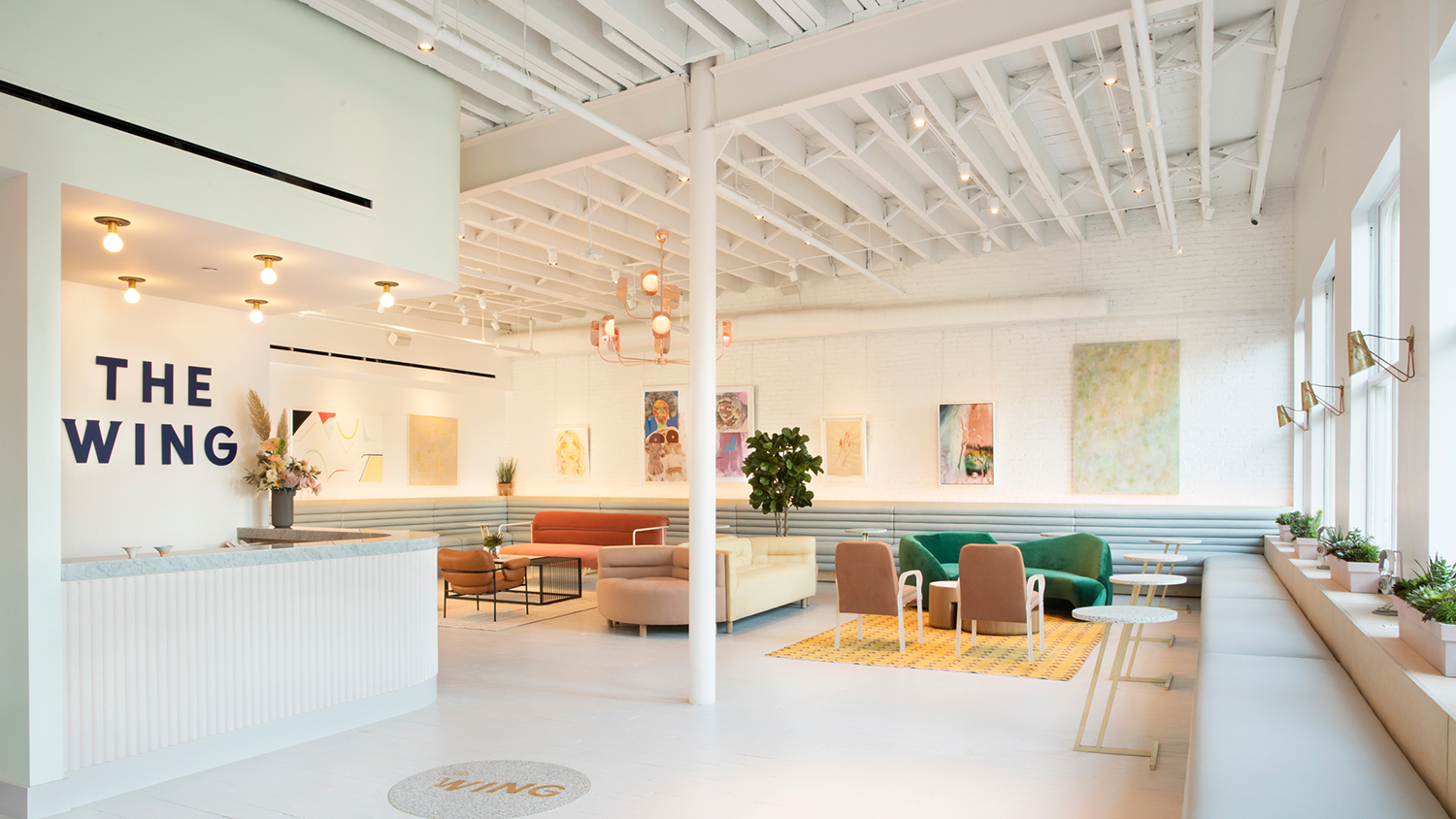
Credit: www.nda.ac.uk
Frequently Asked Questions
What Does An Interior Designer Do Daily?
An interior designer plans, designs, and decorates indoor spaces. They choose colors, furniture, and layout.
Is Interior Design A Stressful Job?
Yes, it can be. Deadlines and client expectations often create pressure. But it’s also rewarding.
What Skills Are Important For Interior Designers?
Creativity, attention to detail, and good communication are key. Also, knowledge of design software helps.
How Do Interior Designers Stay Updated?
They attend workshops, follow trends, and read design magazines. Networking with other designers is also important.
Conclusion
Working as an interior designer is both challenging and rewarding. You balance creativity with practicality. Every project offers unique experiences. The environment is dynamic and ever-changing. Collaboration with clients and teams is crucial. Attention to detail is essential in this field.
Stay updated with trends and materials. Communication skills are vital for success. Enjoy the journey and embrace every learning opportunity.

My name is Mahi Uddin, and I’m a blog writer with over two years of experience specializing in creating engaging, informative content using AI tools. I contribute to InExDecor.com, where I share creative ideas and practical tips for transforming interior and exterior spaces into beautiful, functional environments. With a passion for storytelling and a knack for blending creativity with technology, I strive to craft blogs that not only inform but also inspire readers. When I’m not writing, you can find me exploring design trends or enjoying a good book with a cup of coffee.

